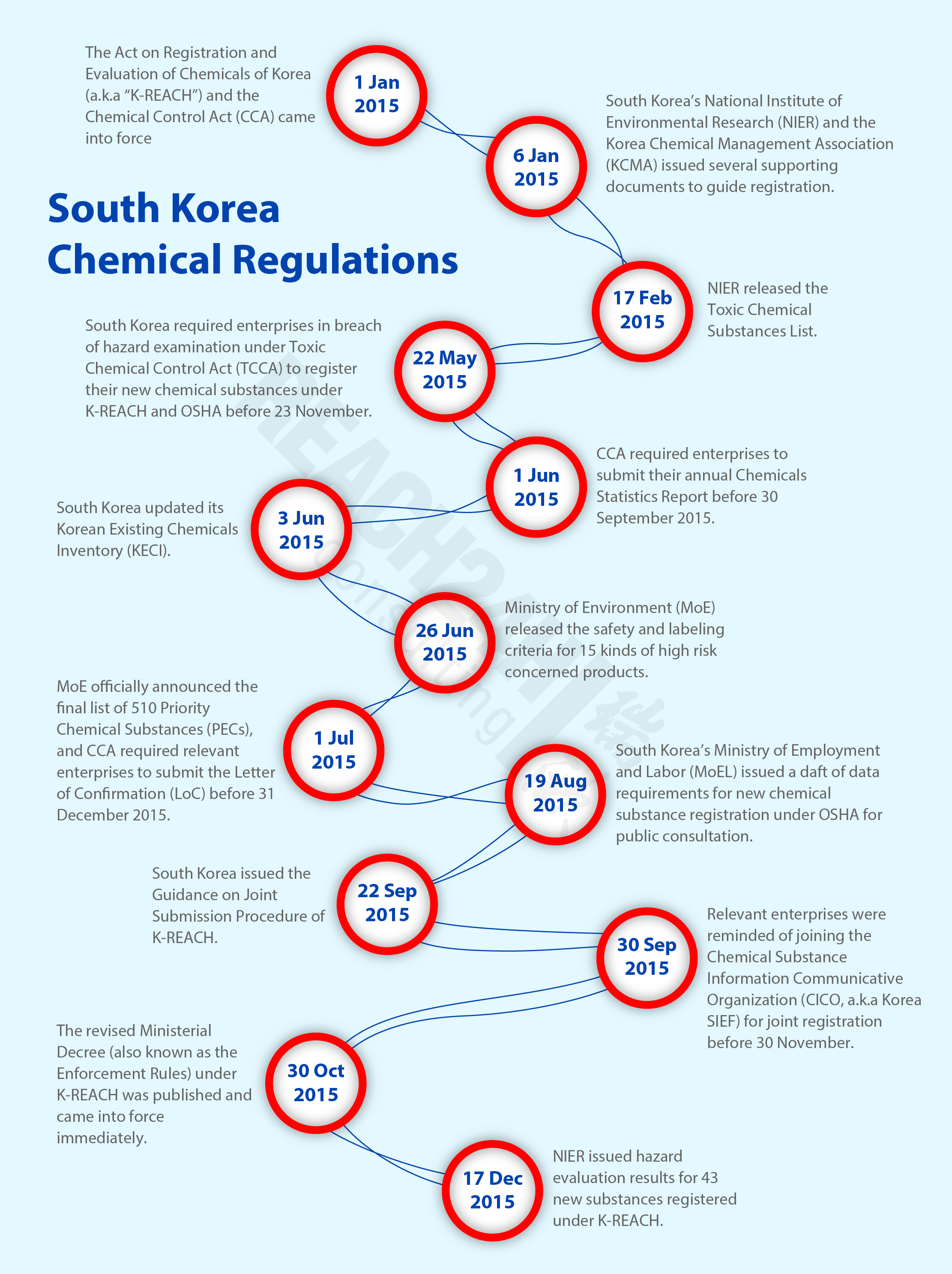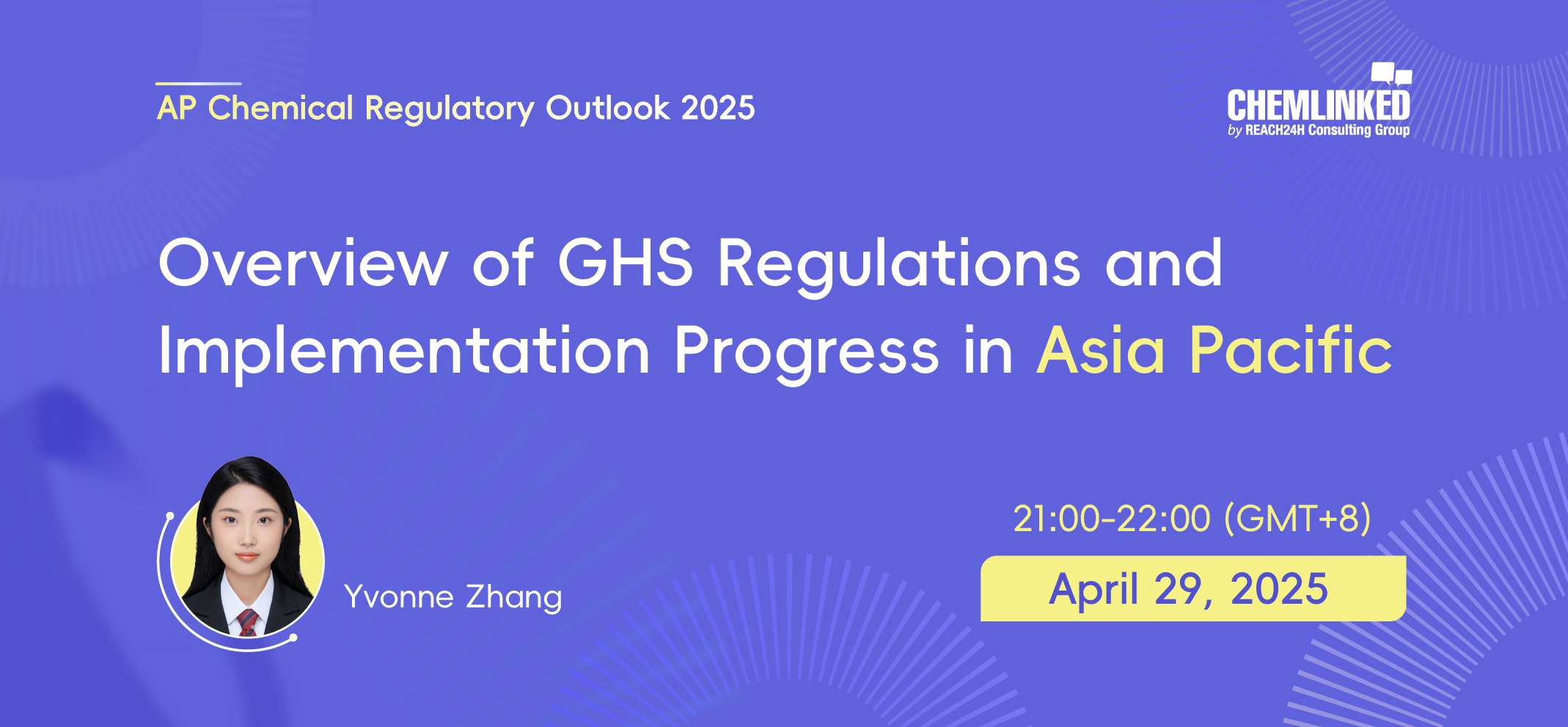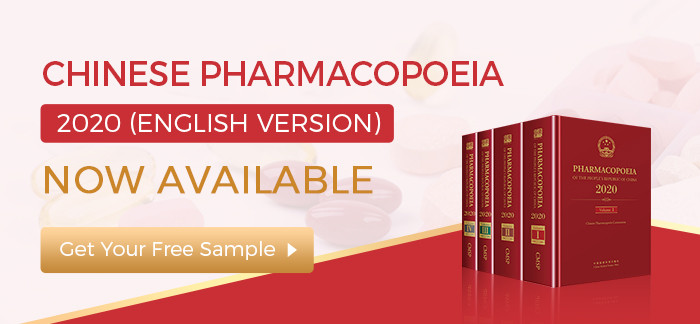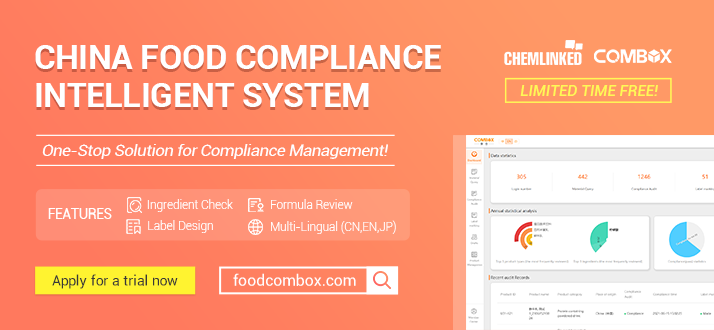2015 Global Regulatory Highlights – South Korea Chemical Regulations
The Act on Registration and Evaluation of Chemicals of Korea (a.k.a. “K-REACH”) is regarded as the first REACH-style chemical regulation adopted in an Asian country, which manages new chemical substances, existing chemical substances and downstream products by prescribing the requirements for registration, hazard evaluation and risk assessment. It was officially put into force on 1 January, 2015. After that the South Korean authorities took several moves to support its implementation by releasing the guidance documents, the on-line submission system and the 1st batch of 510 PEC substances that companies are most concerned with.
At such a time of bidding farewell to the past while ushering in the new, REACH24H Consulting Group helps you connect the dots to grasp the highlights, well positioned to facilitate a comprehensive understanding of key developments of South Korea Chemical Regulations in 2015.

South Korea is the 6th largest chemical trading nation, attracting many global corporations to do business there. The official implementation of K-REACH inevitably exerts much impact on the trading activities and also heralds a fierce competition for market share among all companies engaged in chemical trading to South Korea. REACH24H suggest that companies pay timely attention to the regulatory updates of K-REACH and secure a large share of the South Korean market by means of preemptive and full compliance.
Further Readings:
2015 Global Regulatory Highlights – EU REACH
2015 Global Regulatory Highlights – Global GHS
2015 Global Regulatory Highlights – China Chemical Regulations
2015 Global Regulatory Highlights – Taiwan Chemical Regulations
2015 Global Regulatory Highlights – Japan Chemical Regulations
The year of 2015 saw a series of major regulatory changes, bringing both challenges and opportunities to the chemical industry. To tease out the key updates in Asia Pacific’s regulatory regime throughout the past year, ChemLinked has dedicated to prepare you an annual report “2015 Chemical Regulatory Review of the Asia Pacific Region”.




